The 1950s were all about giant monsters raging across the countryside, or at least that’s how I like to think of them, full of radioactive insects and cranky dinosaurs, but in 1957 the father of one of the greatest movie monsters of all time, the father of King Kong, stop-motion legend Willis O’Brien, would take another shot at capturing that love for rampaging furor, which audiences of all ages seemed to have, and that film would The Black Scorpion.
Unlike many of the monster films of this era, the creatures of The Black Scorpion were not created by atom bomb testing or by a mad scientist dabbling in God’s domain, instead, it’s a case of God being his usual playful self and unleashing these monsters just for the fun of it. The movie opens with a narrator telling us that “For centuries, the prayers of Mexico’s peasants have been their only shield against the devasting furies that have wrecked their homes and destroyed their lives. And so again they kneel, terrified and helpless as a new volcano is created by the mysterious and rebellious forces of nature.” Geologists Dr. Hank Scott (Richard Denning) and Dr. Arturo Ramos (Carlos Rivas) are dispatched to study this particular “rebellious force” but while on the route they come across a smashed home, a crying baby and a totalled Mexican police car, as volcanoes are not known for performing hit and run attacks on patrol cars we find Scott and Ramos a little puzzled by all of this.
“This is either the work of a giant arachnid or possibly football rioters.”
When our two heroes arrive at the nearby town of San Lorenzo they are told by Father Delgado (Pedro Galván) that the destruction they have witnessed was caused by something the villagers believe to be a demon bull and not just the result of volcanic activity. Ignoring this inciteful explanation our dynamic dumb-dumbs begin their geological survey while members of the Mexican army, under Major Cosio (Arturo Martínez), arrive in San Lorenzo to begin disaster-relief efforts, they ignore his plea to not wander around the volcano and head off so that the film can have its “meet cute” in the form of local rancher Teresa Alvarez (Mara Corday), who Scott immediately falls in love with.
His love of rocks is put to the ultimate test.
The film starts out as a bit of a mystery, with strange destruction and bodies killed by some weird organic poison, but before they can even get the results of the poison back from entomologist Dr. Velasco (Carlos Múzquiz), giant scorpions attack the ranch and the mystery is solved. With a young boy named Juanito (Mario Navarro) in toe, because what’s a monster movie without a kid sidekick, Scott and Arturo volunteer to be lowered into a massive pit that is believed to be the nest of these giant prehistoric scorpions. That these two idiots survive wandering a cavern that contains fifty or more of these giant scorpions is probably one of the most egregious uses of plot armour I’ve ever seen, and by this point, the military has already proven that rifles have absolutely no effect on these creatures, and all our heroes thought to bring with them was a rife, a camera and a canister of gas that may or may not be effective.
That they survive this flies in the face of all logic.
What is effective in this film is the stop-motion animation used to bring the giant scorpions to life, done by stop-motion pioneer Pete Peterson these moments are quite chilling, of course, that is of course when the filmmakers aren’t randomly throwing in these terrible transparent matte shots where the scorpions look like terrible see-through shadow monsters. There is one particular sequence dealing with the giant scorpions attacking a train that is both brutal and horrifying and is a real showstopper and must have had 1950s audiences at the edge of their seats as the creature pluck up passengers one by one for a little midnight snack.
"Is this the dining car?"
Willis O’Brien was the special-effects supervisor on this picture, with Peterson responsible for most of the hands-on work, but with one of O’Brien’s calibre on deck it is not wrong to expect there to be some decent creature attacks, unfortunately, he was working under a much smaller budget than what he had with King Kong, and this kind of explains some of those dodgy moments of bad opticals, and while we do get some really nice stop-motion scorpion attack sequences we are also subjected to the repeated use of a drooling scorpion puppet for many up close reaction shots that, sadly, never once look all that convincing.
“I’m ready for my close-up, Mister DeMille.”
Stray Observations:
• Richard Denning should avoid travelling south, a few years earlier a trip to South America resulted in an encounter with the Creature from the Black Lagoon.
• Upon finding the smashed police car Hank and Arturo hear the dispatcher on the car’s radio calling for an update, what is odd here is that we're in Mexico and the dispatcher is speaking English and the filmmakers didn’t even bother to give the dispatcher a regional accent.
• The sounds of the scorpions are the same ones used in the classic giant ant film Them! because why bother creating new sounds for your insect/arachnid threat when you have access to a nice audio library?
• Once the threat is revealed to be prehistoric giant scorpions it’s kind of strange that our two geologists would continue to be called upon to deal with this threat. Is monster fighting part of a geologist’s university curriculum?
• The film includes a seven-year-old kid who is incredibly annoying, one who constantly gets into trouble, which is a trope that would become a mainstay of the Godzilla and Gamera movies.
• Our heroes are lowered into a large pit to find the scorpions and encounter a thirty-foot worm and a giant trapdoor spider, which isn’t surprising as Willis O’Brien used leftover creatures from his "Lost Spider Pit Sequence" that was excised from the 1933 King Kong.
“Beat it you stupid worm, this is my movie!”
Directed by Edward Ludwig, The Black Scorpion has some very fine moments, the aforementioned attack on a train by the scorpions being an especially effective sequence, but the film’s three leads are about as exciting as dry toast at a church picnic and any time spent with them makes us long all the more for the film’s title creatures to show up, as they are some of the ugliest, meanest, nastiest creatures ever brought to the big screen. One can’t fault the filmmakers too much for the rather tepid and forgettable romance that has been shoehorned in, as this was pretty much a requirement of the time, and while I have little use for cardboard heroes Richard Denning does at least try to bring a little character to this otherwise dull protagonist. The Black Scorpion may be a paint-by-the-numbers creature feature but when those few excellent monster moments do occur it’s actually worth the wait.
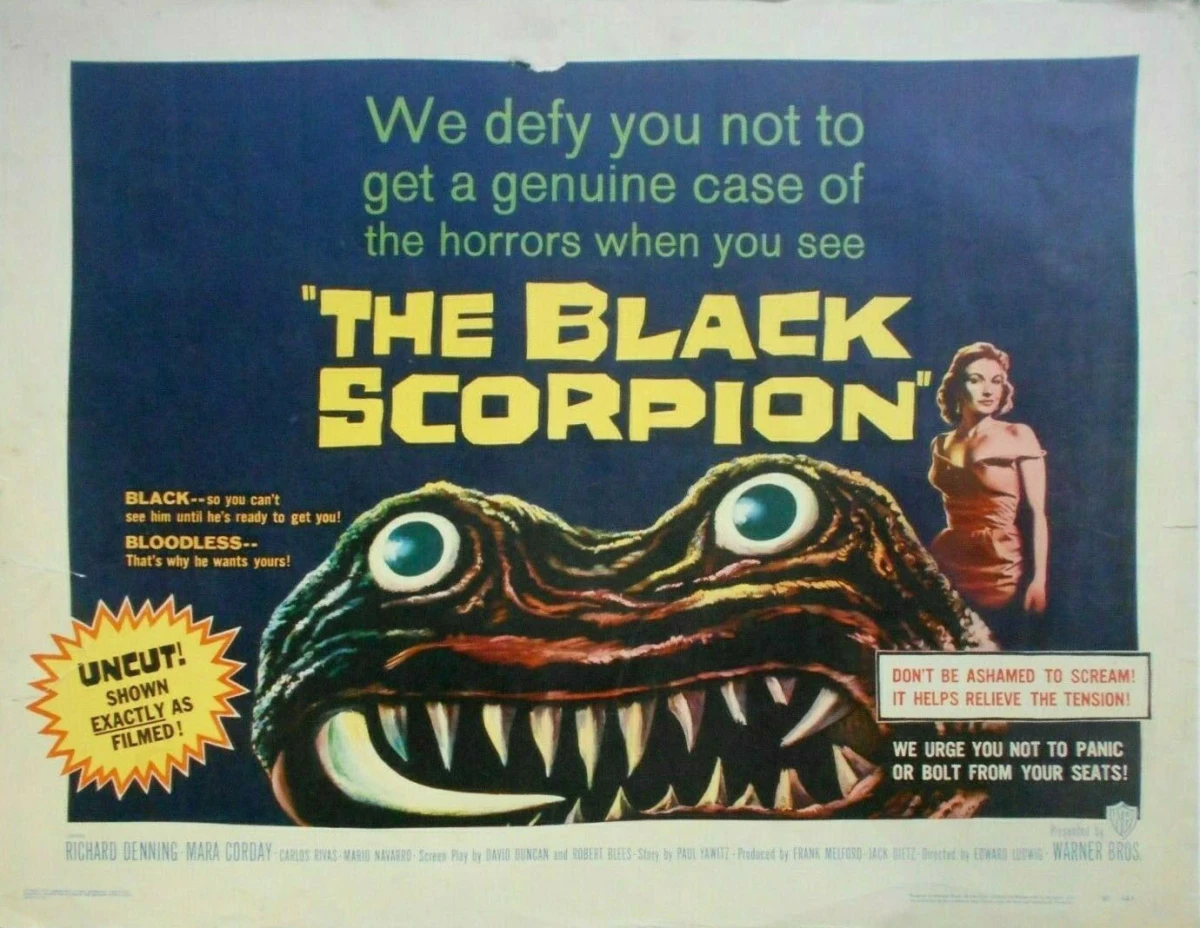
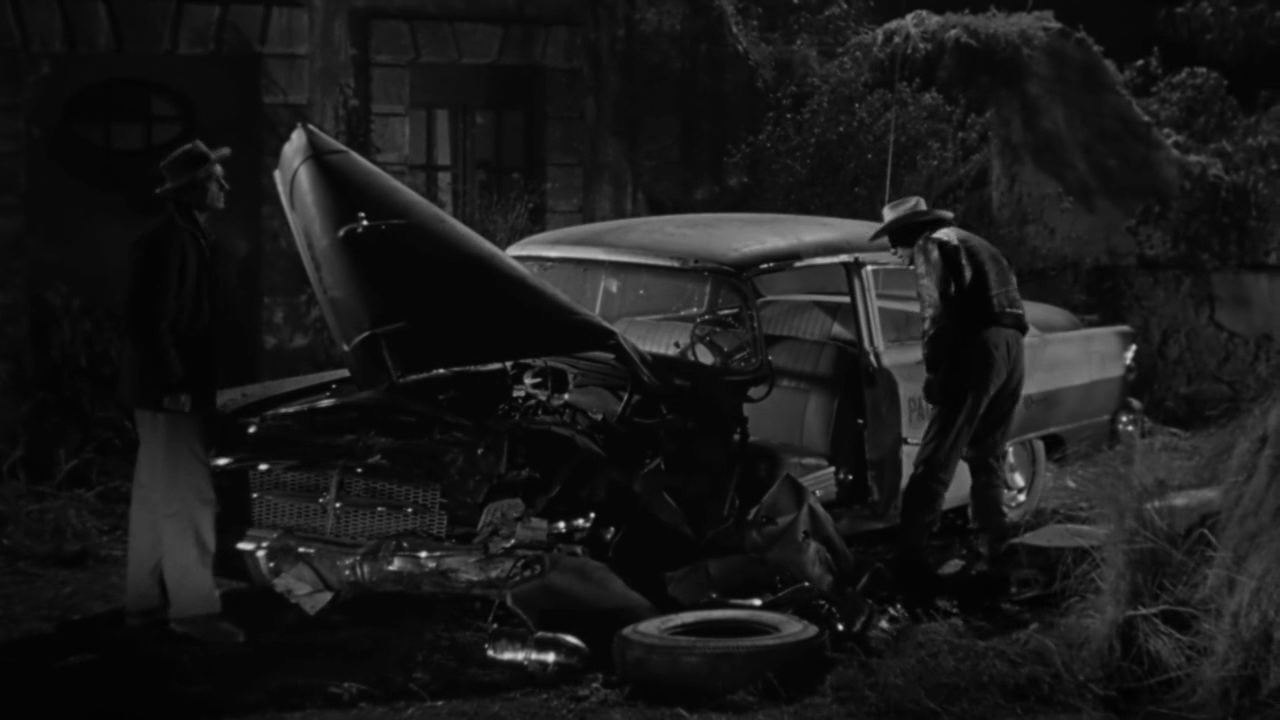
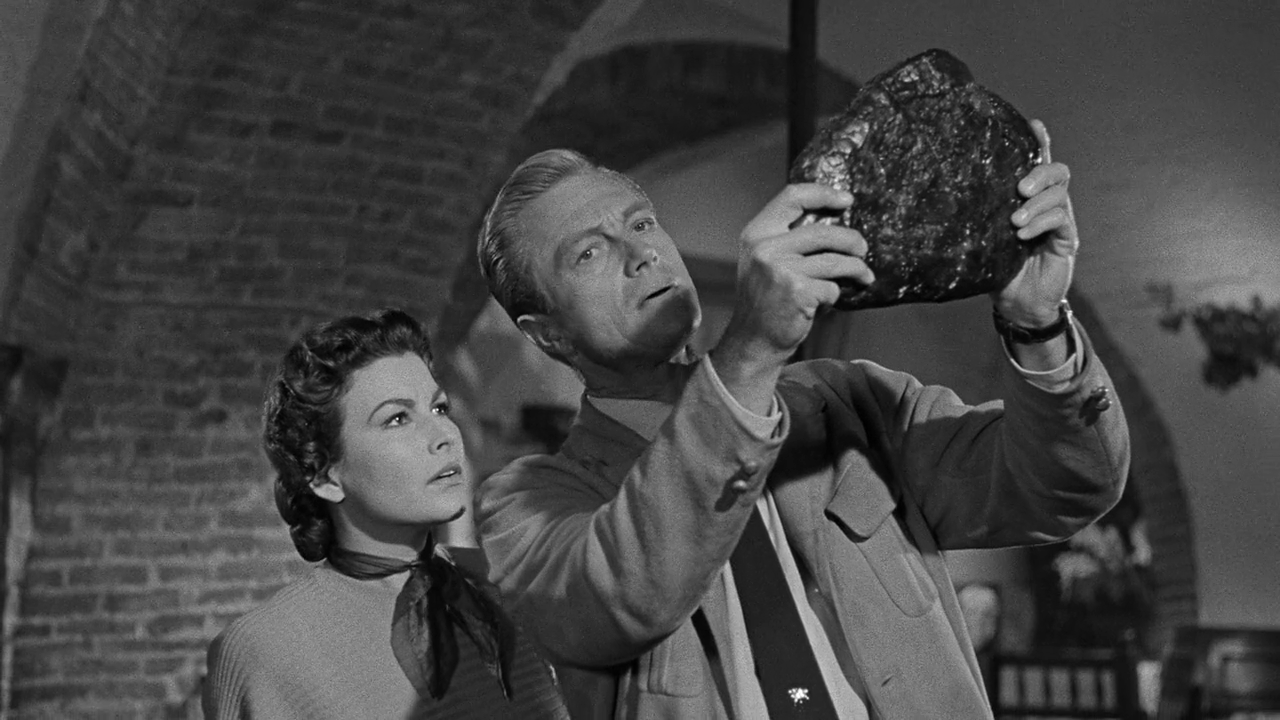
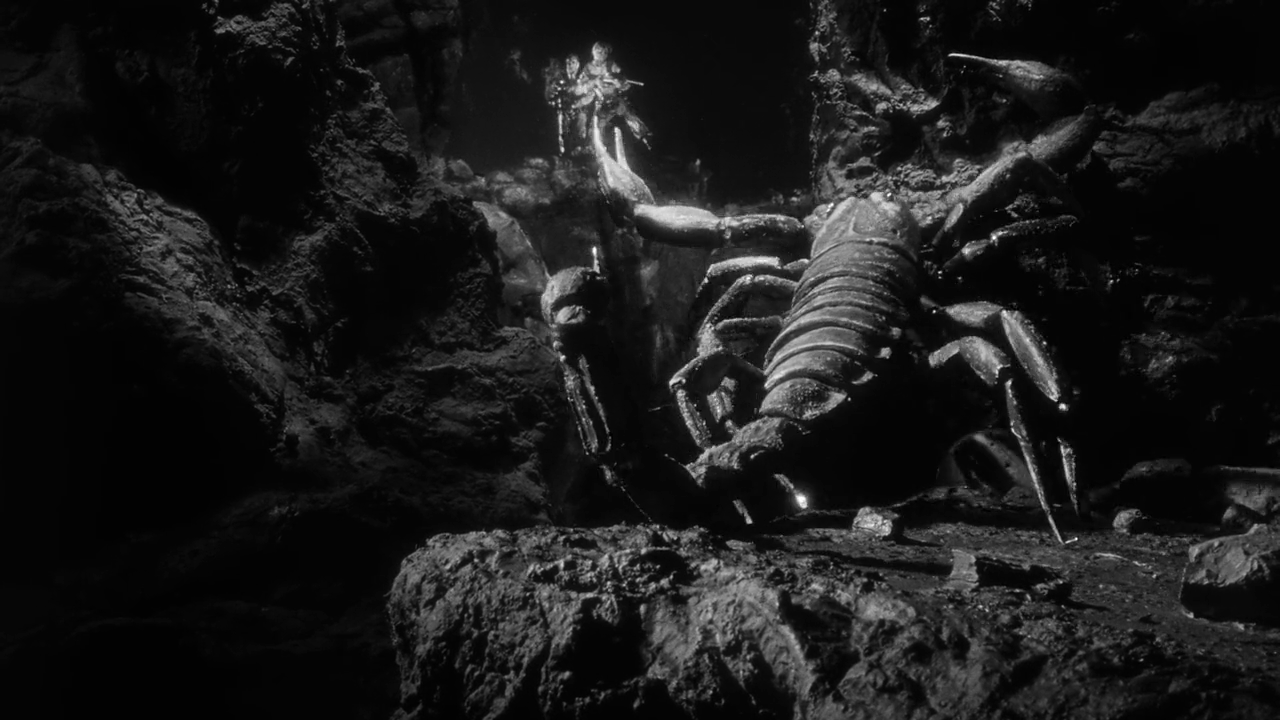
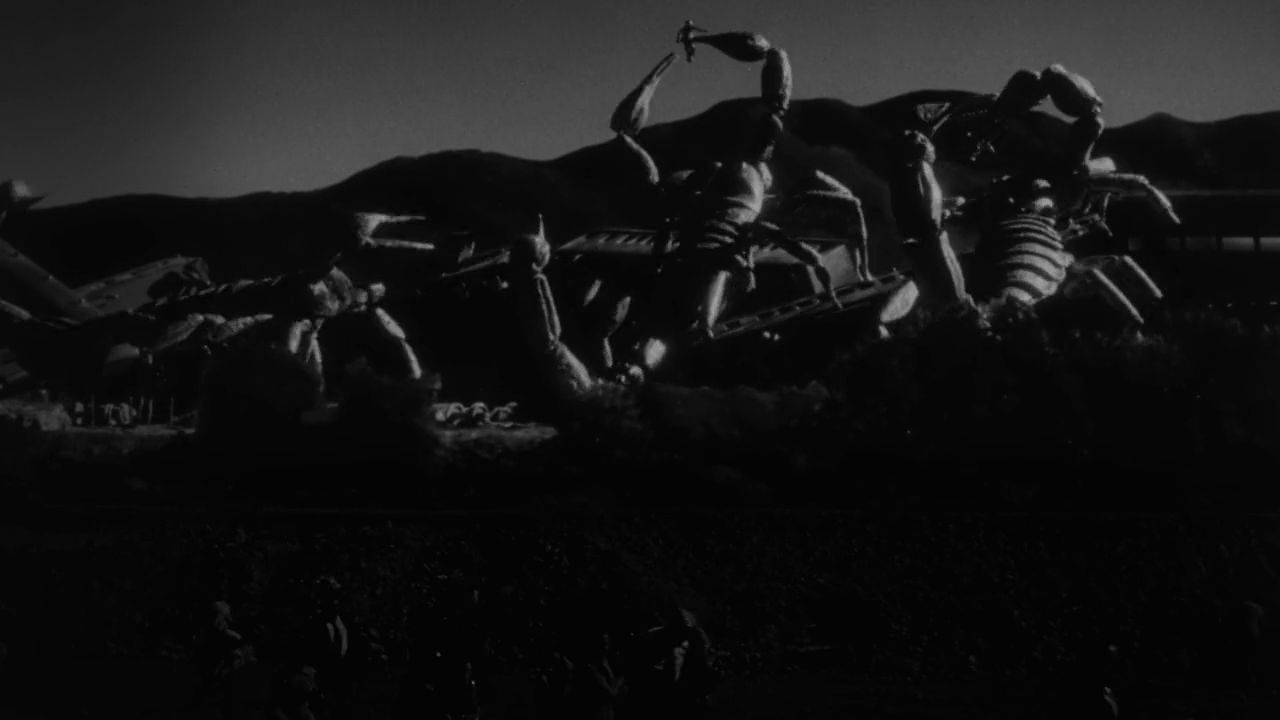
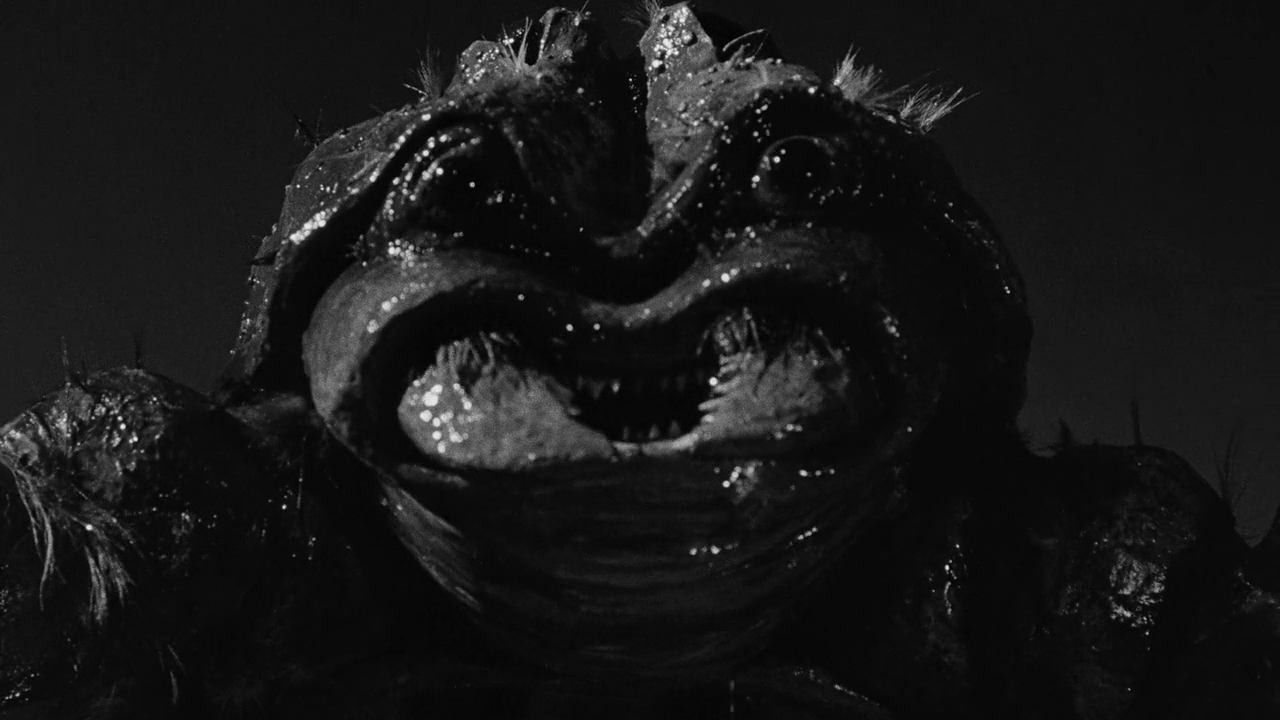
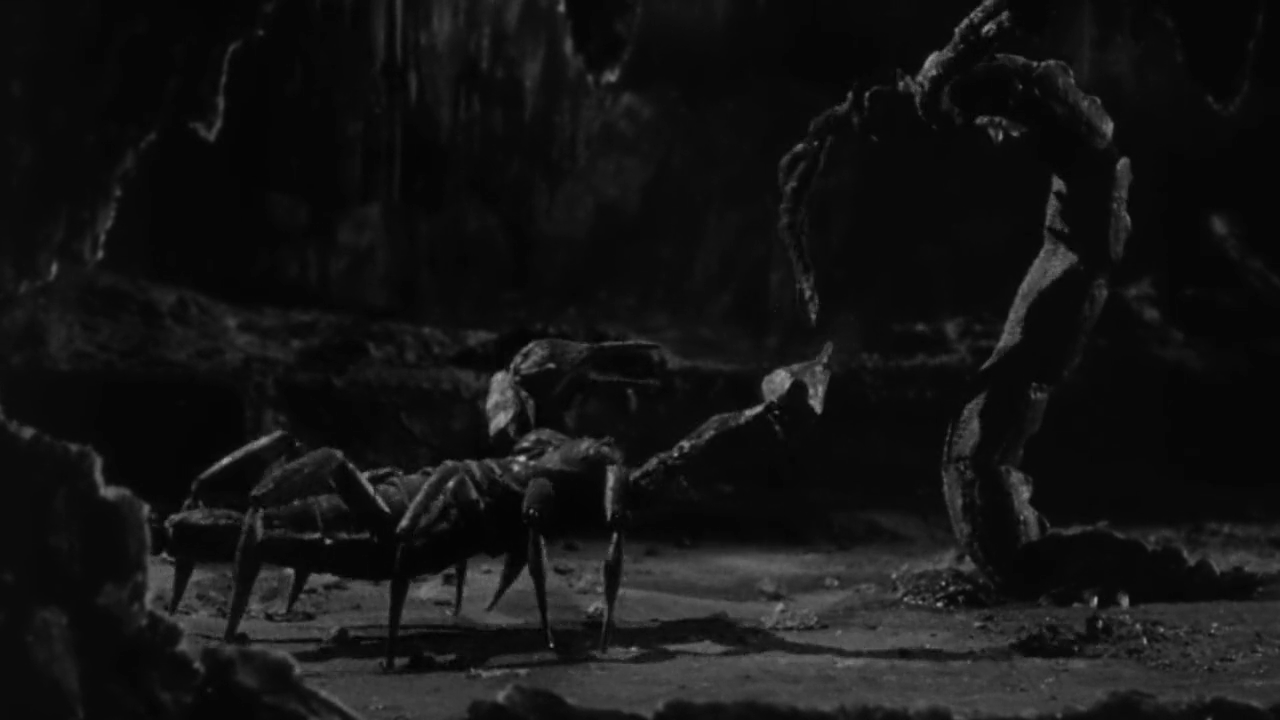

No comments:
Post a Comment